SOMME BRITISH Sector - Lochnagar Mine Crater - Hawthorn Ridge Mine Crater
Years of visit: 2005, 2007, 2011
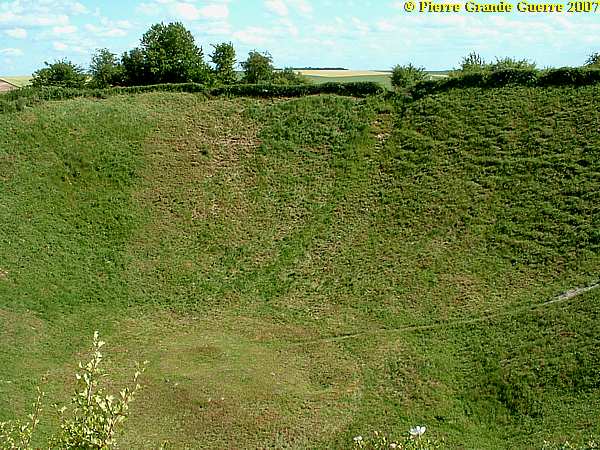
A visit to two mine craters out of the 17 huge mines, which were detonated along the Somme front on 1 July 1916 at 7.20 AM. We start at la Boisselle with the Lochnagar Mine Crater. Later on this page we will visit the Hawthorn Ridge Mine Crater near Beaumont Hamel.
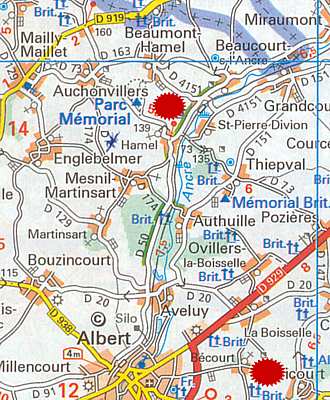
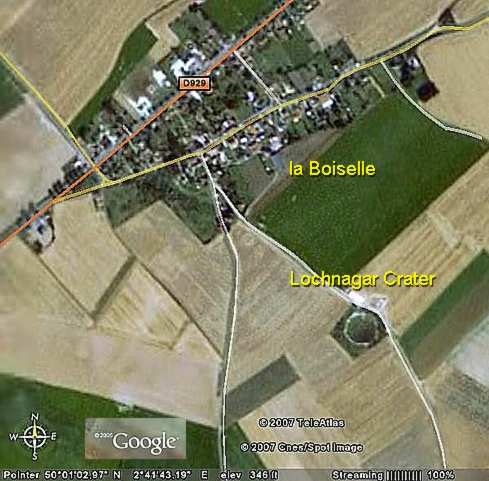
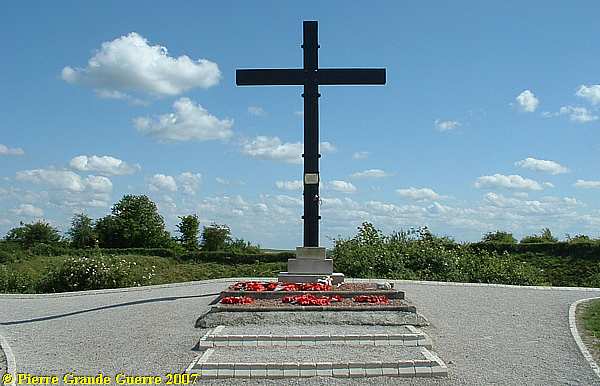
Mine Warfare at the Somme
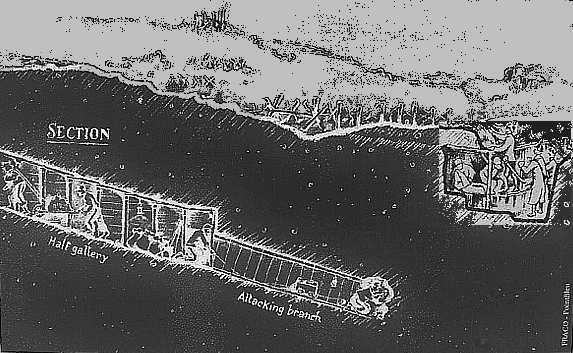
Before the
Battle of the Somme the Royal Engineers and
Tunneling Companies were tunneling for months to get large amounts of explosives under the many German redoubts.
These mine chambers , at the end of a tunnel, were filled with 2.000 to 60.000 lbs. of explosives. In June 1916, before the Battle started, along the Western Front as a whole, the British detonated 101 mines, the Germans detonated 126 mines.
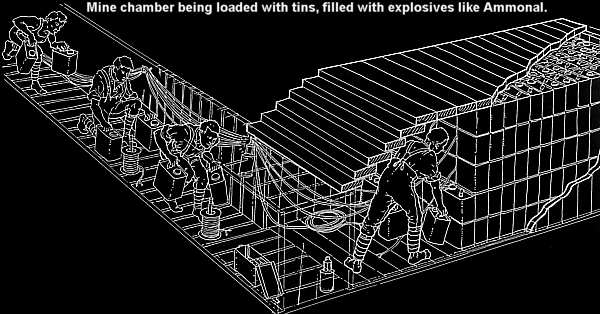
After the continous artillery bombardment , which started at dawn 24 June 1916, of 7 days and 7 nights on the German lines, with 1537 Artillery Guns and 3.000.000 shells, ...
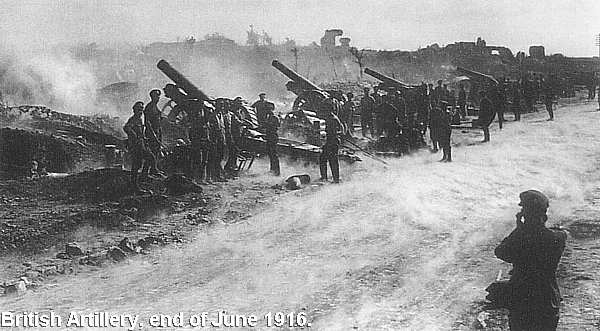
... the British detonated 17 huge mines along the Somme front at 7.20 A.M.

There are almost none craters left , but we visited 2 craters , like this one:
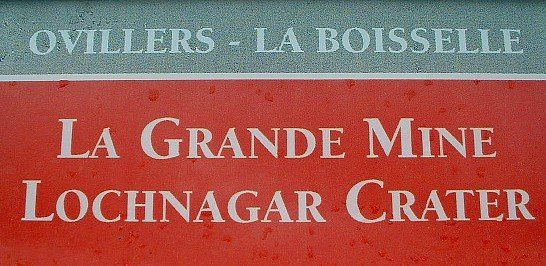
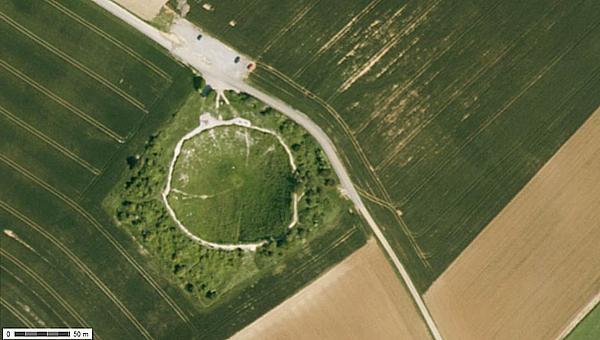
I estimate the diameter of the Lochnagar C rater at about 75 m. and the depth about 25 m.

The diameter of the Lochnagar Crater is to wide to catch it in one view with my camera lens. The Lochnagar mine was loaded by the 185th Tunneling Company with 2 charges of resp. 24.000 Lbs and 36.000 Lbs of Ammonal.
Warning! The crater is subject to increasing erosion. It is strictly forbidden to clamber down into it.
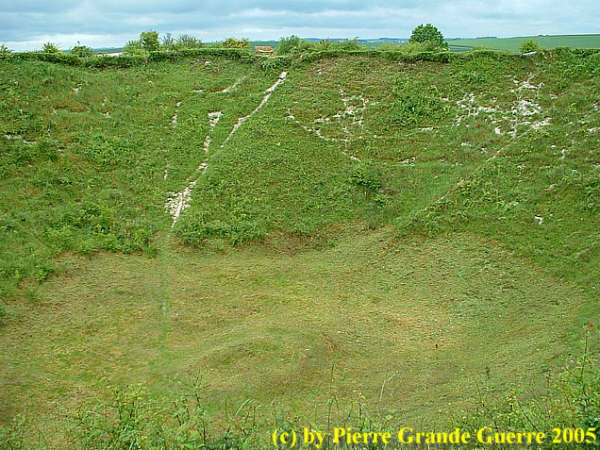
Before we continue to the Hawthorn Ridge Crater I would like to show you this interesting video of the 3D laser scans carried out in June and October 2012 of the " Glory Hole " and the Lochnagar Crater at La Boisselle of the underground situation. Thanks to the La Boisselle Study Group ( http://www.laboisselleproject.com/ ) !!
From the Lochnagar Crater we continue to Hawthorn Ridge east from Beaumont Hamel.
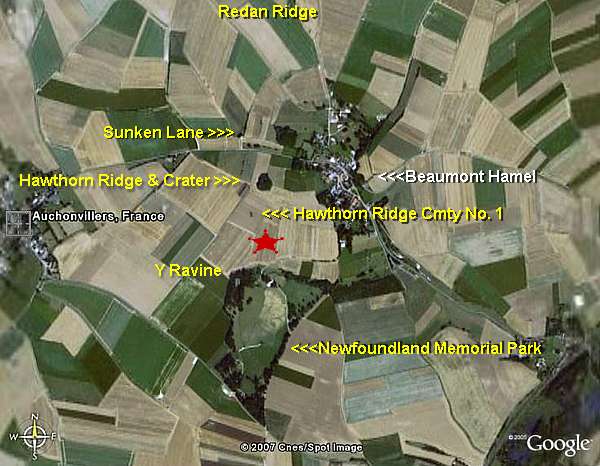
Hawthorn Ridge Cemetery no. 1 on the top of Hawthorn Ridge ...
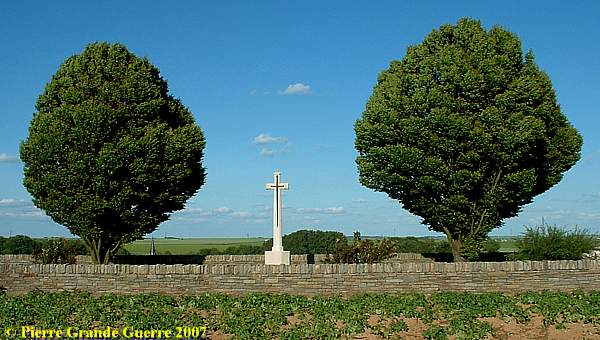
... offers a beautiful 360º panorama view over the battlefield , but also a view at the now wooded Hawthorn Crater .
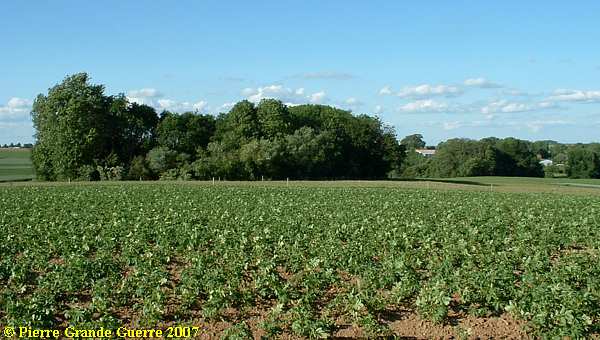
The 252nd Tunnelling Company
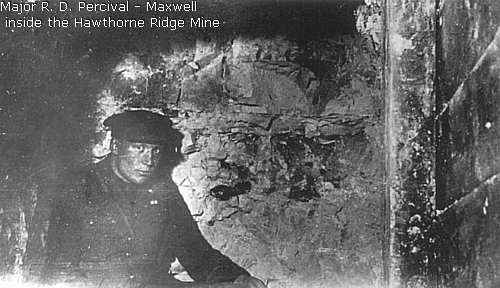
The 252nd Tunnelling Company dug tunnel of 300 m. at a depth of 25 m., to end under the ridge and the German Hawthorn Redoubt. The Company charged the huge underground dome with 40.000 Lbs. of Ammonal.
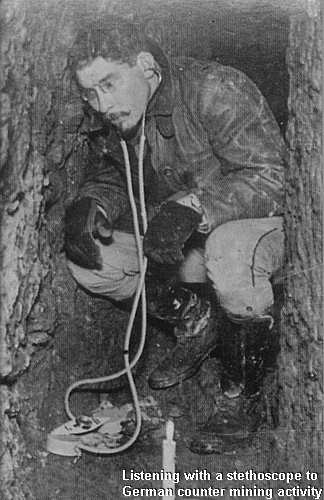
The Tunnelers detonated the mine 10 min. too early . Stills of the famous scene of Geoffrey Malins of the explosion of the Hawthorn Mine, spreading debris and body parts.

Below: the original film scene of the Hawthorn Ridge explosion , filmed by Geoffrey Malins . The explosion created a crater of 11 m. deep and over 100 m. wide.
View from Sunken Lane to the Hawthorn Ridge. This is the same spot from where Geoffrey Malins filmed the explosion of the Hawthorn Mine.
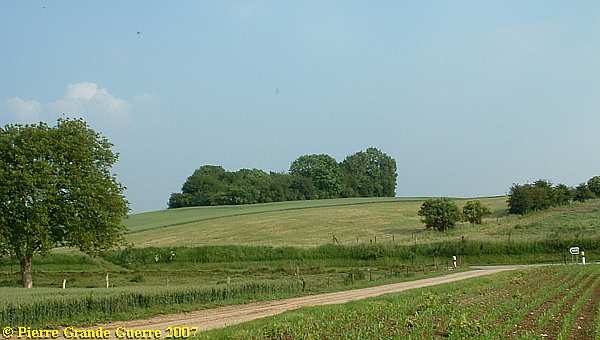
Nowadays it is hard to detect in the overgrown crater , but it has the shape of an "8".
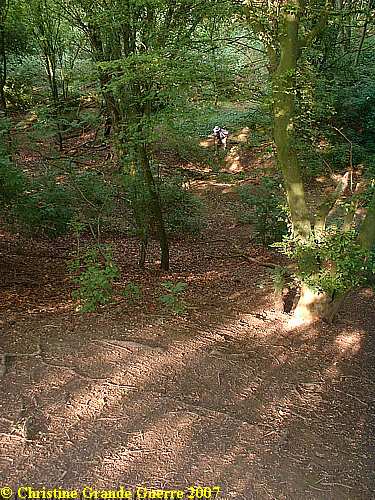
I climbed down to give you an impression of the depth in the northern circle of the "8", and in the southern circle on a depth of about 10 m. My late wife, Chris, made these photos from the crater lip.
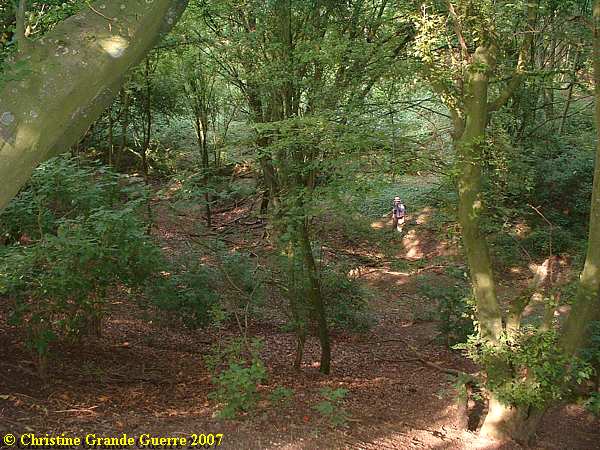
The second crater, finally forming the "8" shape, was created by a British explosion on 13 November 1916, because the first advance of 1 July at the Hawthorn Ridge was no success.
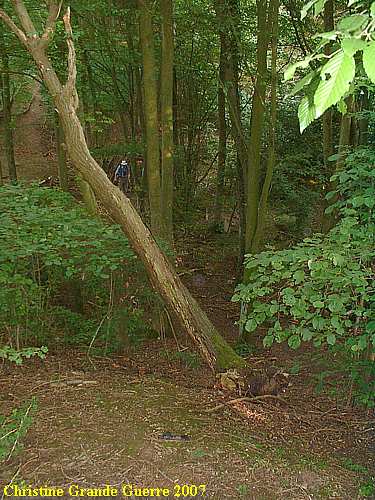

View from the lip of the crater into the direction of the Sunken Lane and Beaumont HamelCemetery.
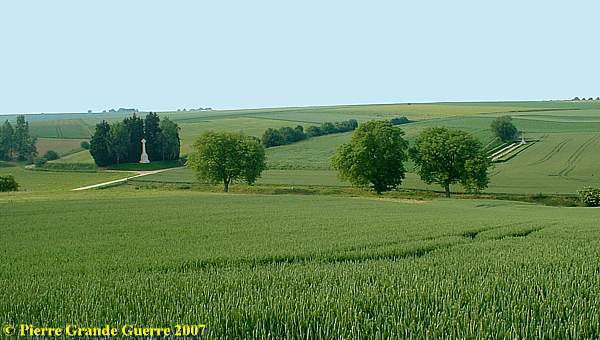
On the next pages we will see what happened at 7.30 AM, when the infantry attacked Thiepval.
Continue to the next chapter : " Thiepval Memorial - Dorsets Memorial - Mouquet Farm "










